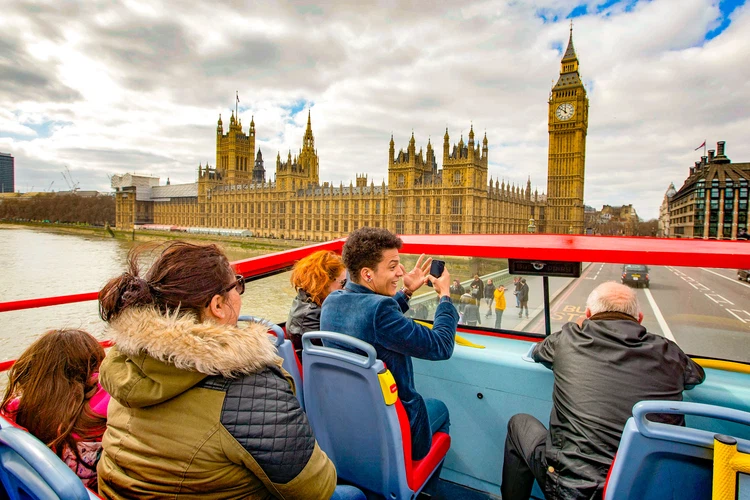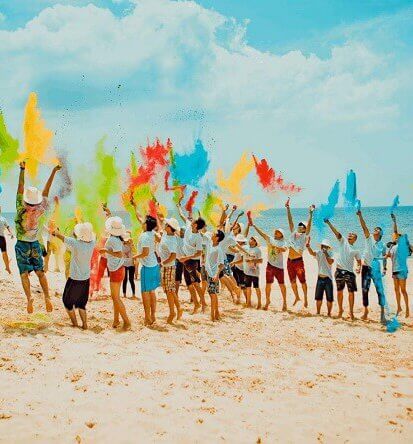Tips
How Much to Tip Tour Guide in 2025: Guidelines for Travelers

Tipping can be a confusing aspect of travel, particularly when it comes to recognizing how much to show appreciation for a tour guide’s service. In 2025, the recommended tip for tour guides typically ranges from 10% to 20% of the total tour cost, depending on the quality of service and the specific tour experience. Knowing the appropriate amount to tip not only supports the guide but also enhances the overall travel experience.
Different regions and types of tours may influence tipping norms, which can further complicate the decision. For instance, while tipping is customary in many tourist areas, some countries have varying expectations. Understanding these nuances can ensure travelers are respectful and informed, rewarding guides for their expertise and efforts.
When embarking on a tour, being prepared with the right tipping guidelines can lead to a smoother journey. It enables travelers to fully engage with their experiences, leaving room for appreciation while also budget considerations.
Key Takeaways
- Tipping for tour guides usually falls between 10% and 20% of the tour cost.
- Tipping norms can vary significantly by region and type of tour.
- Understanding tipping etiquette enhances the travel experience and ensures respectful practices.
Understanding The Tipping Etiquette
Tipping etiquette can vary significantly depending on location and service type. In the United States, standard tipping for tour guides typically ranges from 10% to 20% of the tour cost.
When deciding how much to tip, several factors come into play:
- Quality of Service: Exceptional service may warrant a higher tip, while poor experiences may result in a more modest amount.
- Tour Length: For longer tours, around $10 to $20 per person is often considered appropriate, especially for full-day outings.
- Group Size: In group settings, it’s common for people to tip a smaller amount per person, typically contributing to a collective tip for the guide.
Specific cultural norms also influence tipping practices. For example, in some countries, tipping is optional, while in others, it is expected.
Local guides often appreciate cash tips, as it allows them to access funds immediately. Always ensure that the tip reflects the level of service received, as it directly impacts the guide’s income.
As a rule of thumb recommended by most top tour companies, if unsure, asking fellow travelers or checking local guidelines can provide clarity. Engaging with the service provider or company about their tipping expectations can also yield helpful insights.
Factors Determining Tip Amounts
Several key factors influence the amount of tip one should consider for a tour guide. Understanding these aspects can enhance the tipping experience and ensure that guides feel appreciated for their efforts.
1. Duration of the Tour
The length of the tour plays a significant role in determining the tip amount. For full-day tours, a tip of $20 to $40 per person is common, reflecting the extensive time and energy the guide invests. In contrast, shorter, half-day tours generally warrant a lower range of $15 to $20.
Guides who lead longer excursions often offer more in-depth knowledge and engagement, which merits higher compensation. Attention should be given to the hours spent and the personal touch the guide provides throughout the trip.
2. Group Size
The size of the tour group can impact tipping practices substantially. In smaller, intimate groups, individuals may tip more generously, as they experience closer interactions with the guide. Conversely, in larger groups, the tip per person might be lower due to the shared nature of the experience.
It is common to calculate the tip as a flat amount divided by the number of participants, ensuring that the guide’s effort is acknowledged. Understanding the dynamics of group size can enhance overall satisfaction.
3. Tour Complexity
Some tours are inherently more complex than others, requiring greater expertise and effort from the guide. For instance, adventure tourism or specialized tours, such as hiking or cultural immersions, often demand more from the guide compared to a standard city tour.
The tip might range from 10-20% of the tour cost in such scenarios. Complex tours may also involve additional risks or logistics, making it appropriate to account for this in the gratuity. Participants are encouraged to consider the guide’s expertise and effort level when determining the tip.
4. Custom or Standard Tour
Whether the tour is customized or follows a standard itinerary can influence the expected tip amount. Customized tours often provide a tailored experience that meets specific interests, justifying a higher tip. The personal connection and individualized attention from the guide can make a significant difference in the overall experience.
In contrast, standard tours usually yield a consistent level of service, leading to more standardized tipping practices. Tourists engaged in customized experiences often find themselves more inclined to reward the guide generously, as the level of dedication is generally higher.
5. Quality of Service
The quality of service received is perhaps the most critical factor when determining how much to tip a tour guide. Exceptional guides who go above and beyond to enhance the experience usually receive higher tips.
Factors influencing service quality include knowledge, enthusiasm, and engagement with participants. Positive interactions, helpfulness, and the ability to handle unexpected situations are crucial. It is important for the tourist to assess how the guide has contributed to their overall enjoyment and satisfaction during the tour.
Recognizing the nuances of tourism experiences can help participants feel confident in their tipping decisions. For an overview of various tourism types, exploring the different types of tourism you need to know is beneficial.
Typical Tipping Rates for Tour Guides
Tipping rates for tour guides can vary significantly based on location and type of tour. Below are common tipping practices in different regions:
- United States and Canada: A standard tip is 15% to 20% of the total cost. Exceptional service may warrant up to 25%.
- Mexico and Costa Rica: Travelers typically tip around 10% to 15% of the tour cost.
- Brazil: Tipping is generally lower, ranging from 5% to 10%.
- European Countries:
- France, Italy, and Spain: A customary tip is about 10% to 15% of the tour price.
- Private Tours: It is common to tip between 10% and 20%, reflecting service quality and personal satisfaction.
When tipping local guides, a daily amount between $2 to $10 is often appropriate, depending on the tour context.
It is advisable to tip in local currency when possible. This prevents the guide from facing unfavorable exchange rates. Cash is preferred for its directness, ensuring the gratuity reaches the guide without fees or delays.
Tipping Etiquette Abroad
Tipping practices can vary significantly across different regions of the world. Understanding the local customs is essential for travelers wanting to show appreciation for quality service. Here’s a breakdown of tipping etiquette in several key regions.
Europe
In Europe, tipping varies by country. Generally, it is customary to leave around 10-15% of the total bill for tour guides, although some countries have specific norms. For instance, in France and Italy, a tip of €5-€15 for a full-day tour is common.
In Spain and Germany, similar guidelines apply, with tips often rounded up to the nearest Euro considered polite. The UK typically sees a 10% tip as standard for tour services. It is important to check if gratuity is already included in the bill, especially in upscale establishments.
Asia
Asia has diverse tipping customs that can differ dramatically from one nation to another. In countries like Japan, tipping is often not expected and can sometimes be seen as rude.
Conversely, in countries like Thailand and Indonesia, leaving a tip of about 10% is appreciated. For guided tours, a small token of thanks, such as $1-5 per person, is generally sufficient. In larger cities, such as Hong Kong, tip around 10-15% at restaurants, which can extend to tour guides as well.
North America
In North America, tipping is essential for many service industries, including tours. Travelers typically tip 15-20% of the total tour cost.
Many recommend starting at 10% for less satisfying services and adjusting based on experience. For example, a guided tour costing $100 may merit a tip of $15-$20. It is advisable to give cash directly to the guide, as some companies might not share gratuities evenly among staff.
South America
In South America, tipping practices can vary widely. In countries like Brazil and Argentina, a tip of around 10% is common in restaurants and can be applied to tour guides as well.
However, in Peru, tipping is more discretionary. A $5-10 tip for a full-day tour guide is generally appreciated. Tourists should be aware of local customs, as higher-end tours might include gratuity in the total cost, making it unnecessary to tip additionally.
Africa
In Africa, tipping is often welcomed, with specific expectations varying by country. In South Africa, it is standard to tip 10-15% for guides and drivers, reflecting quality service. For safaris, a daily tip of $10-20 per guide is customary.
In East Africa, like Kenya, a small tip of about $5 for guides is acceptable, while in Egypt, tourists often tip around 10% for various services. Cash in local currency is preferred.
Oceania
In Oceania, particularly in Australia and New Zealand, tipping is not as entrenched as in North America but is becoming more common. A 10% tip is appreciated for excellent service.
In New Zealand, tipping is generally less expected in informal settings but is more customary in guided tours and high-end services. For tours, a tip of $10-20 is welcome, particularly if the guide provided a memorable experience.
Understanding these regional nuances can help travelers express gratitude appropriately while ensuring they respect local customs.
Guidelines for Niche Tour Experiences
Here’s a closer examination of how to approach tipping for various types of tours.
Adventure Tours
For adventure tours, such as white-water rafting or trekking, the recommended tip usually ranges from 10% to 20% of the tour cost. Tipping more is advisable for guides who ensure safety and enhance the experience.
In group settings, a typical guideline is $10 to $20 per participant, especially for guides assisting with equipment or offering personalized tips. Many companies, including those offering active travel, encourage tipping based on performance and engagement.
Historical and Cultural Tours
In historical and cultural tours, tipping can vary significantly based on guide expertise. A standard range is $5 to $15 per person. Guides with in-depth knowledge and engaging storytelling often warrant a higher tip.
For group tours, a collective tip can be encouraged, where participants pool together to show appreciation. Additionally, private or bespoke experiences might merit tipping at the higher end. A thoughtful tip can reflect the guide’s ability in making history come alive.
Wildlife and Nature Tours
Wildlife and nature tours often involve specialized guides with ecological knowledge. Tipping between $10 to $20 per guest is typical, and higher amounts are warranted for exceptional encounters or rare sightings.
Guides in this niche may also engage in conservation efforts, and recognizing this through a tip can contribute positively. It’s essential to assess the quality of service and adjust gratuity accordingly. Tour companies focusing on eco-tours often recommend tips based on satisfaction and engagement.
Food and Wine Tours
During food and wine tours, participants should consider tipping around 15% to 20% of the tour price. Guides who offer insights into local cuisines and wine pairings enhance the experience significantly.
A minimum of $5 to $10 per person is advisable, especially if multiple venues are visited. Tipping more is encouraged for tasting sessions that exceed expectations. Many culinary experiences aim to foster connections between participants and their destinations, making gratuity an important part of acknowledgment.
Luxury and Private Tours
Luxury and private tours typically command tips around 15% to 20% of the tour cost, reflecting the personalized service received. Tipping might be higher for situations where guides go above and beyond to cater to preferences.
Private experiences often create an intimate setting, and gratitude shown through tipping can foster lasting relationships. Participants should also consider the overall satisfaction and quality of service when determining the tip amount.
In all cases, understanding the norms and expectations within each niche tour helps create a positive experience for both the participant and the guide.
How to Tip – Cash vs. Electronic Tips
Tipping can be done with cash or electronically. Each method has its advantages and considerations.
Cash Tips:
- Preferred by Many Guides: Cash is often the preferred choice for tipping tour guides. It ensures immediate access to funds without fees.
- Local Currency: It’s best to tip in local currency to prevent currency exchange issues. This provides the guide with the full value of the tip.
- Discreet and Personal: Cash gives a personal touch, allowing for a polite and discreet exchange.
Electronic Tips:
- Convenience: Tipping electronically can be convenient, especially for those who may not carry cash. This method is easily done through various apps.
- Variety of Options: Different platforms, like PayPal or Venmo, offer ways to send tips. Some tours may even provide specific methods for electronic tips.
- Fees: Electronic transactions may incur fees. This can reduce the amount the guide receives unless the person tips extra to cover these costs.
In some cases, electronic tipping may be less personal. Cash remains the most traditional and favored choice for many tour guides. The best method depends on individual preferences and circumstances.
Dealing with Tipping on Multi-Day Tours
Tipping on multi-day tours can be a bit more complex than single-day excursions. Tourists often wonder how much to budget for gratuities over several days.
Typically, the recommended tip for multi-day tours is to consider $10 to $15 per person per day for the main guide. This amount reflects the guide’s service over the duration of the tour.
For local guides or additional staff, tips can range from $2 to $5 per person each day, depending on their contribution to the tour experience.
It’s essential to clarify the tipping policy before the tour begins. Some companies may include gratuities in the total cost, while others may expect guests to tip individually.
Tourists can also set aside a final lump sum for the entire tour duration. For example, for a five-day tour, a tip of approximately $50 to $75 per person can be appropriate.
Remember to adjust tips based on service quality. Exceptional service deserves higher gratitude.
Communication with fellow travelers can help standardize tipping practices within the group. Sharing experiences can lead to informed decisions about gratuities.
Lastly, carrying cash in small denominations is helpful. Many guides prefer cash tips to ensure they receive the full amount.
Tipping Your Tour Guide on a Budget
Tipping a tour guide can feel daunting when on a budget. However, it’s possible to express appreciation without breaking the bank.
A general rule of thumb for tipping is 10-20% of the tour cost. For budget-conscious travelers, it helps to calculate a fixed amount that feels manageable. This can be between $5 to $10 for a day tour.
Guides provide valuable insights, making a little extra meaningful. If a guide went above and beyond, consider tipping a slightly higher amount. This encourages great service for future tours.
For those organizing a company trip, it’s important to budget for tips as well. Encouraging team members to pool together can lighten individual burdens. This way, a collective amount can still show appreciation while remaining cost-effective.
When on a limited budget, prioritize the tours that promise the best experience. Skipping pricier tours might allow for a more generous tip later. Trip organizers should factor tipping into their travel budget to ensure participants feel valued.
Lastly, if a tour offers free options, consider leaving a small tip of $5 to $10 based on the experience. Every little bit helps and ensures that guides feel recognized for their hard work.
Planning a successful outing takes thought, especially when considering tipping strategies. Those interested in effective planning can explore tips on organizing a company trip.
Gratuities Included: When Not to Tip Your Tour Guide
In some situations, tipping may not be necessary. Understanding these circumstances can help avoid confusion.
- Tour Packages with Gratuities Included: Many tour companies factor gratuities into their package prices. If a tour explicitly states that gratuities are covered, additional tipping is not expected.
- Private Tours with Pre-Arranged Payments: For private guides who charge a flat rate that includes tips, guests should not feel obligated to give extra.
- Company Policy: Certain companies have specific policies concerning gratuities. If the guide mentions that tipping is not needed, it’s best to respect that.
- Incentivized Experiences: Some tours feature promotional packages where tipping is included as part of the overall service cost. Guests should confirm this before deciding to tip.
- Group Tours with Shared Gratuities: On group tours where tips for both the guide and driver are pooled, individual tips may not be appropriate.
When in doubt, it is advisable to ask the tour operator or guiding service about their policy on gratuities. Knowing these circumstances can lead to a more pleasant experience for both guests and their guides.




